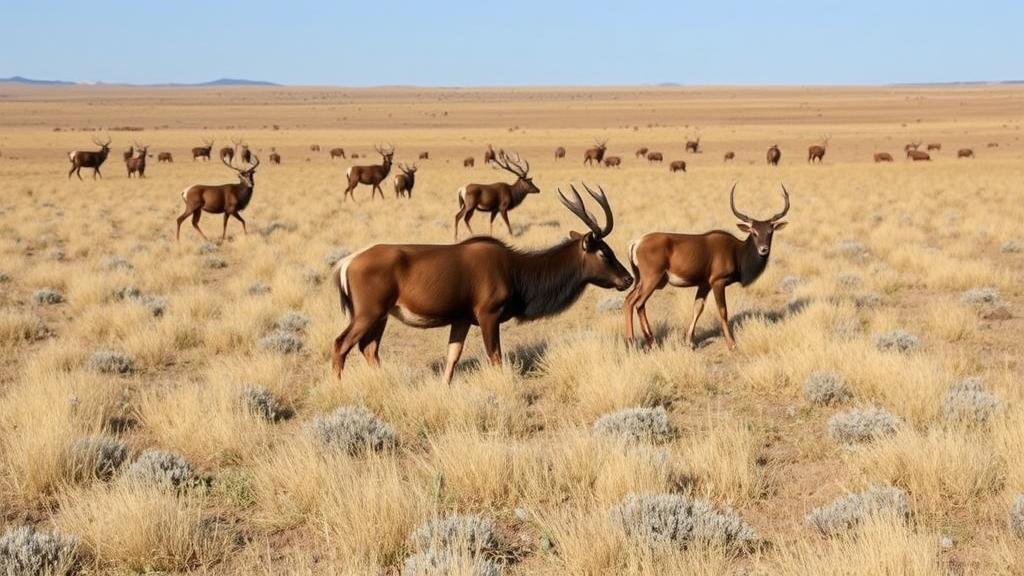Techniques for Spotting Game Processing Areas in Remote Plains
Techniques for Spotting Game Processing Areas in Remote Plains
Identifying game processing areas in remote plains is a critical skill for wildlife management, hunting enthusiasts, and researchers. Understanding these areas can contribute to wildlife conservation efforts, enhance hunting strategies, and inform ecological studies. The following sections outline various techniques, methodologies, and technologies employed to spot game processing areas effectively.
Understanding Game Processing Areas
A game processing area refers to a location where animals are handled after they are harvested or have died of natural causes. e areas can show signs of animal activity, including remains, waste, and other biological materials. Knowing how to spot these areas requires skills in tracking, observation, and analysis of environmental clues.
Natural Indicators of Processing Areas
In the remote plains, several natural signs can indicate the presence of a game processing area:
- Wildlife Trails: Game trails, which are paths worn down by continuous animal movement, often lead to processing areas. Observing the width and depth of these trails can provide insights into which species are present.
- Scat and Tracks: Animal scat and footprints signify recent activity. size, shape, and arrangement can help identify specific species, while fresh scat indicates proximity to processing areas.
- Vegetation Changes: Areas with significant alteration in flora, such as trampled grass or overbrowsed bushes, can indicate frequent animal presence. Such disturbances can signal a nearby processing site.
Use of Technology in Spotting Processing Areas
Modern technology offers sophisticated methods for locating game processing areas:
- Trail Cameras: These cameras, placed strategically near potential processing sites, can capture images of animals. This non-intrusive method helps in understanding animal behavior and patterns without human presence.
- Geographic Information Systems (GIS): GIS technology allows wildlife managers to analyze spatial data and identify patterns related to animal movements, habitat use, and potential processing areas, facilitating informed decision-making.
- Drones: Drone technology has become prevalent in wildlife tracking. can cover large areas quickly, capturing high-resolution images or video that reveal potential processing sites based on patterns of disturbance or recent carcass locations.
Seasonal Considerations
Understanding the seasonal movements of wildlife is essential for accurately spotting game processing areas. Different species exhibit varying behaviors throughout the year, influencing where processing may occur:
- Migration Patterns: For migratory species, tracking the timing and routes can help identify processing areas during specific months. For example, in North America, many bird species migrate south in the fall, leading to increased activity around known processing zones.
- Breeding Seasons: During breeding seasons, animals often concentrate their activities in specific areas. Scouting during these times can lead to high densities of processing signs.
Case Studies and Real-World Applications
Several case studies illustrate the effectiveness of these techniques:
- The Serengeti National Park, Tanzania: Researchers employed both traditional tracking methods and drone technology to monitor wildebeest migrations. The combination of vegetation analysis and satellite imagery helped in pinpointing processing areas used during the calving season.
- Yellowstone National Park, USA: Park rangers utilized GIS to map bison movement patterns over time. This data helped them establish management strategies, including identifying new game processing areas based on observed behaviors.
Ethical Considerations and Best Practices
When exploring and examining game processing areas, ethical considerations must guide the actions of hunters, wildlife managers, and researchers:
- Respect for Wildlife: Ensure that activities do not interfere with essential wildlife behaviors, particularly during breeding or migration seasons.
- Compliance with Laws: Familiarize yourself with local regulations governing wildlife and hunting practices.
- Limit Disturbance: Use technology judiciously and avoid excessive presence in sensitive habitats to prevent stress on wildlife populations.
Actionable Takeaways
Spotting game processing areas requires a multifaceted approach that combines observational skills, technological advancements, and ethical considerations. To effectively identify these areas in remote plains, consider the following actionable steps:
- Learner the natural signs of wildlife presence by engaging in local tracking workshops.
- Use trail cameras and GIS tools to monitor and analyze animal movements over time.
- Remain informed about seasonal patterns and their impact on animal behavior to predict likely processing areas.
- Adhere to ethical practices to ensure the sustainability of wildlife populations and habitats.
By implementing these techniques, one can enhance the understanding of wildlife dynamics and improve the management of game processes in remote plains, contributing to both ecological knowledge and responsible hunting practices.



